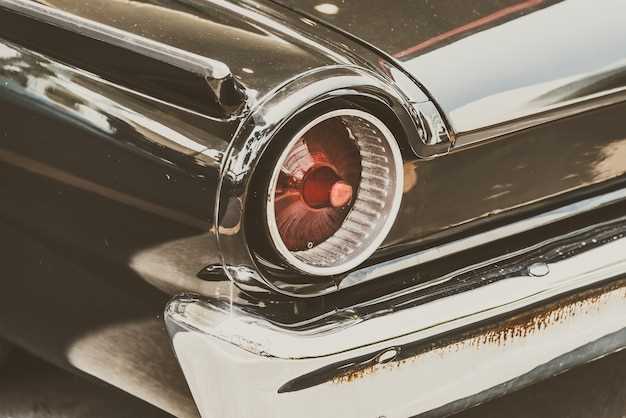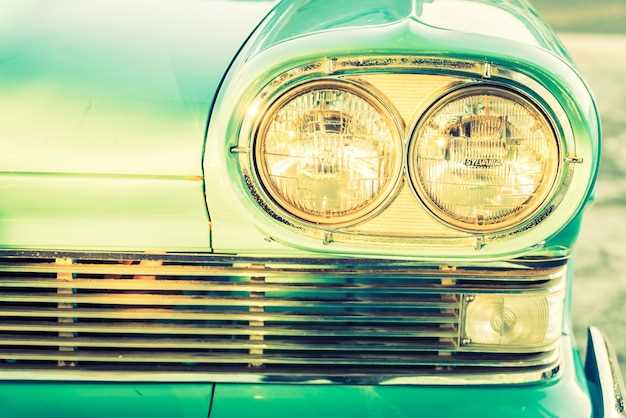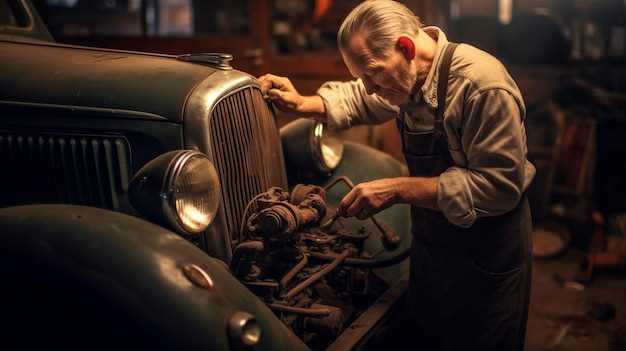
Restoring a classic car is an exhilarating journey that combines passion, craftsmanship, and sometimes, a significant financial investment. However, for many enthusiasts, the dream of bringing a beloved vehicle back to life can quickly spiral into a costly endeavor. To ensure that your restoration project remains both enjoyable and financially feasible, it’s essential to implement effective budgeting strategies from the outset.
Having a well-thought-out budget can mean the difference between a successful restoration and a project that drags on indefinitely due to unforeseen costs. This guide will explore key budgeting tips that can help you manage expenses while staying true to your vision for the classic car you seek to rejuvenate. By being proactive in your planning, you can avoid common pitfalls and ensure that your project is not only completed but also aligned with your financial capabilities.
From prioritizing necessary repairs to researching and sourcing parts wisely, establishing a solid budget will empower you to make informed decisions throughout the restoration process. Whether you’re a seasoned restorer or a first-time enthusiast, these tips will help you keep your finances on track while breathing new life into your classic vehicle.
Identifying Key Costs for a Classic Car Restoration Project

Restoring a classic car can be a rewarding yet financially demanding endeavor. To ensure a successful project, it is crucial to identify the key costs involved early in the process. By doing so, you can develop a realistic budget and avoid unexpected expenses.
1. Purchase Price: The initial cost of acquiring the vehicle is often the most significant expense. Prices vary based on make, model, year, and condition. Conduct thorough research to gauge fair market values before making a purchase.
2. Parts and Components: Restoration typically requires a variety of new and refurbished parts, including engine components, transmissions, suspension parts, and exterior panels. Sourcing these materials can be costly, so it’s vital to compile a parts list and estimate costs based on both OEM and aftermarket options.
3. Labor Costs: If you plan to hire professionals for the restoration, labor costs can add up quickly. Rates can vary based on expertise and location. Consider whether you will do any work yourself to save money, but ensure your skill level aligns with the project’s requirements.
4. Paint and Bodywork: Quality paint jobs and bodywork are essential for the aesthetic appeal and value of the car. Pricing for these services can range significantly based on the complexity of the work and the type of materials used. Always seek multiple quotes from reputable shops to compare costs.
5. Interior Restoration: Revamping the interior, including seats, flooring, and dashboards, is another critical area that can incur substantial costs. Consider whether to purchase pre-made kits or have custom interiors built, as this will influence your budget.
6. Mechanical Overhaul: After restoration, a thorough mechanical inspection and potential overhaul of systems like brakes, steering, and electrical components are necessary. Budget for any needed repairs or upgrades to ensure the car’s safety and reliability.
7. Contingency Funds: It is prudent to set aside a contingency fund, typically 10-20% of your total budget, to cover unforeseen expenses that may arise during the restoration process.
By carefully identifying and estimating these key costs, you can better manage your budget and ensure a successful classic car restoration project that meets your expectations.
Creating a Detailed Restoration Budget Plan

Developing a comprehensive budget for your classic car restoration project is essential to avoid unexpected expenses and ensure financial control throughout the process. Begin by outlining the major categories of costs involved in the restoration.
1. Initial Assessment: Start with a thorough inspection of the car to determine its condition. List all areas needing work, from mechanical repairs to cosmetic enhancements. Taking notes during this phase will help create a tailored budget.
2. Parts and Supplies: Create a detailed list of all necessary parts, including engine components, body panels, and interior materials. Research pricing through multiple suppliers to find the best deals. Include a buffer for unexpected repairs, as hidden damage often surfaces during restoration.
3. Labor Costs: Decide if you will be doing the work yourself or hiring professionals. If outsourcing, gather quotes from different shops or craftsmen. Be sure to consider the expertise required for specialized tasks such as bodywork or upholstery.
4. Tools and Equipment: If undertaking the restoration yourself, factor in the cost of tools and equipment you may need to purchase or rent. Owning essential tools can save money in the long run, but ensure to include these expenses in your initial budget.
5. Additional Expenses: Don’t overlook other potential costs including permits, storage fees, and vehicle transportation. Depending on your location, you may need to budget for inspection and registration fees once the restoration is complete.
6. Contingency Fund: Allocate a percentage of your total budget–typically 10-15%–for unexpected expenses. This safety net helps to cover unforeseen issues that may arise during restoration, preventing budget overruns.
7. Progress Tracking: As restoration begins, regularly update your budget to account for actual costs versus initial estimates. This will help refine your spending habits and keep track of where adjustments may be needed in real-time.
By meticulously creating and maintaining a detailed restoration budget plan, you can navigate the complexities of classic car restoration with greater confidence and ensure your project remains financially viable from start to finish.
Finding Affordable Parts and Services for Your Restoration
Restoring a classic car can become an expensive endeavor, but there are various strategies to find affordable parts and services that will help you stay within your budget.
First, consider online marketplaces like eBay, Craigslist, and Facebook Marketplace. These platforms often have listings for hard-to-find parts at competitive prices. Be vigilant and check these sites regularly, as new listings can appear daily. Always verify the seller’s reputation and ask for detailed photos or information about the condition of the parts.
Another excellent resource is vehicle-specific forums and communities. Many classic car enthusiasts frequently share information about where to find affordable parts or services. Engaging in these communities can lead to connections with other restorers who may be willing to sell parts directly or recommend trusted suppliers.
Consider visiting local junkyards or salvage yards. Many classic cars end up here, and you might find some valuable parts, often at a fraction of the retail price. Bring the necessary tools and be prepared to negotiate–yard owners may appreciate a fair offer for parts they’re willing to sell.
Don’t overlook restoration shops that specialize in classic vehicles. While they may charge for their services, they often have established relationships with suppliers and can source parts at discounted rates. Moreover, they might also provide insightful recommendations for affordable service options based on their experiences.
Another money-saving approach is to explore the concept of DIY repairs and restoration. Many tasks, such as minor bodywork or interior upgrades, can be done at home with the right resources. Investing time in learning these skills not only saves money but also adds a personal touch to your restoration project.
Lastly, consider group buying options with fellow restorers. Pooling resources for larger purchases can lead to significant savings, especially for bulk items or supplies that may not be readily available in smaller quantities.
By using these strategies, you can efficiently find affordable parts and services while managing your classic car restoration budget effectively.

